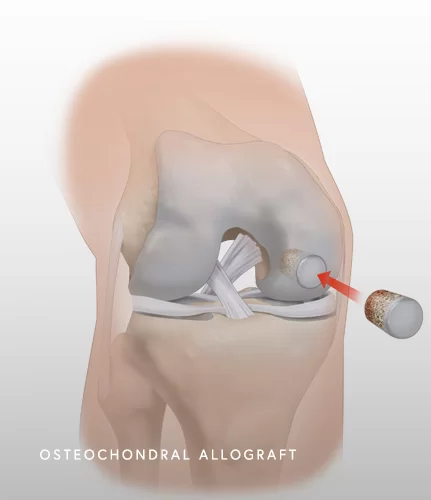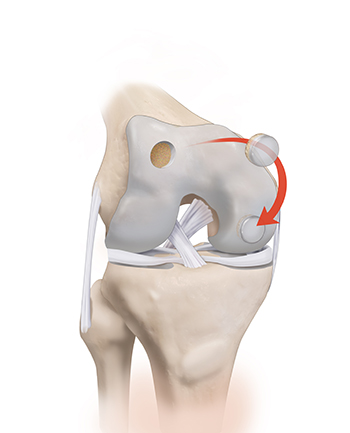Osteochondritis Dissecans (OCD) Surgical Treatments
What are the surgical options for osteochondritis dissecans?
When nonsurgical treatments do not relieve knee pain or if patients are experiencing catching or locking of the knee joint, then it is reasonable to consider the more definitive treatment option of surgery.
The goal of surgery is to improve symptoms and restore function. In the past decade, there have been significant advancements in the surgical treatment of cartilage defects. Cartilage restoration is one of Dr. Chahla’s areas of expertise and aims at restoring the articular surface in young, active patients.
During your surgical consultation for an OCD lesion, Dr. Chahla will present the following surgical treatment options. The exact surgical procedure to address the OCD lesion will depend on the intra-operative findings discovered during the initial diagnostic knee arthroscopy.
Dr. Chahla will recommend initially proceeding with a diagnostic knee arthroscopy. A diagnostic knee arthroscopy is a minimally invasive procedure that allows Dr. Chahla to access the knee joint using a camera and small arthroscopic instruments. In addition to evaluating the entire knee joint, and assessing the ligaments, cartilage, and menisci, Dr. Chahla will thoroughly analyze the OCD lesion.
If the loose fragment includes both cartilage and bone, then Dr. Chahla will proceed with performing a reduction and internal fixation of the loose fragment back to its original anatomical position. It is critical that, the loose fragment has bone below the cartilage to allow for incorporation and healing.
If the loose fragment does not include bone, but rather, only cartilage, then reduction and internal fixation of the fragment is no longer a viable option. Instead, Dr. Chahla will debride the unstable borders of the cartilage defect to decrease friction and irritation and remove any loose bodies of cartilage within the joint. Dr. Chahla will then recommend one of the following cartilage restoration options for definitive treatment of the lesion. Dr. Chahla would recommend proceeding with one of the following treatment options no sooner than 6-8 weeks following the initial knee arthroscopy.
Allografts from a donor (osteochondral allograft) are designed to treat all lesion sizes. This procedure is best for active patients with localized but large defects. These grafts are harvested from a donor and the fresh graft is implanted into the lesion. Survival rates have been reported to be excellent even at 10 years. In most cases of OCD requiring surgical intervention beyond the initial diagnostic knee arthroscopy, this is Dr. Chahla’s preferred surgical option.

Autografts of cartilage and bone (osteochondral autograft) can also be used to treat these injuries. The cartilage graft is harvested from the patient (autologous) and implanted into the defect. Healthy cartilage is harvested from non-weight bearing portions of the knee joint. This procedure is best for smaller lesions.

If OCD has progressed to a point where non-surgical treatments are ineffective, surgical intervention may be necessary. Procedures such as arthroscopic drilling, bone grafting, or cartilage transplantation can help stimulate healing and restore joint integrity. Dr. Jorge Chahla specializes in minimally invasive OCD surgery, offering joint-preserving techniques to optimize outcomes. If you have advanced OCD and require surgical treatment, schedule a consultation with Dr. Chahla in Chicago, Naperville, or Oak Brook for expert care.
At a Glance
Dr. Jorge Chahla
- Triple fellowship-trained sports medicine surgeon
- Performs over 800 surgeries per year
- Associate professor of orthopedic surgery at Rush University
- Learn more


